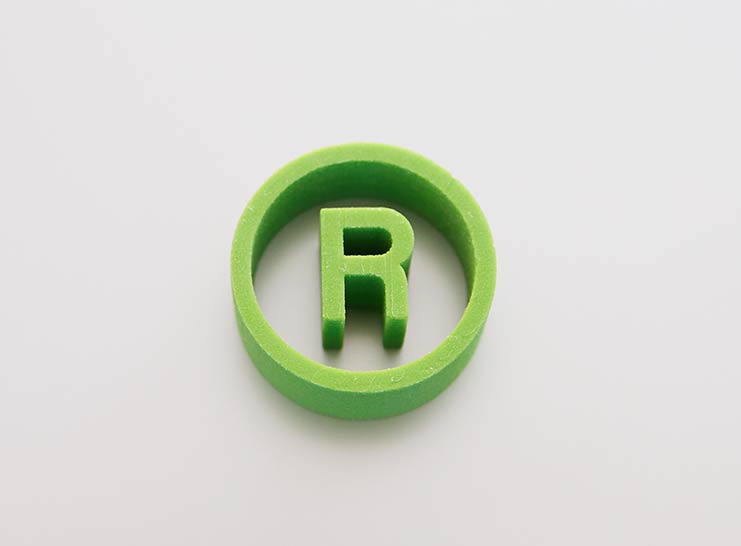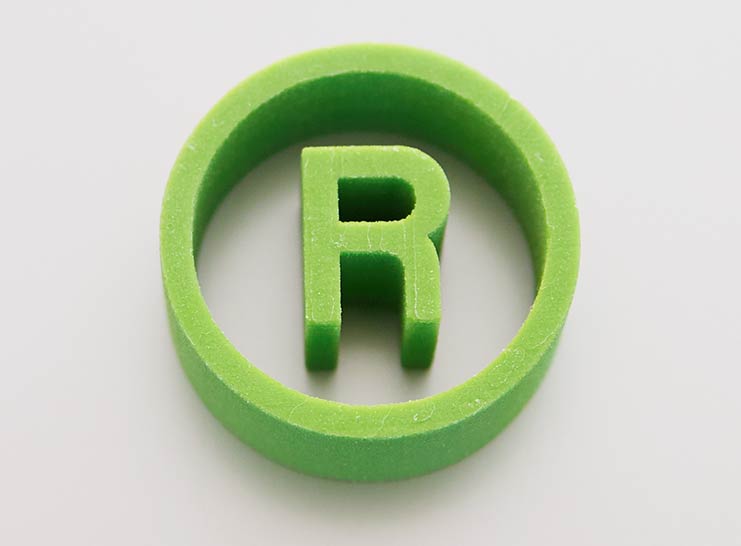International trademark application
The owner of a national trademark or trademark application may extend the territorial protection of his trademark to other countries by means of an international trademark application (IR trademark) under the Madrid system. I.e. it is necessary to have a national trademark or trademark application in order to be able to apply for an international IR trademark.
An applicant using the Madrid system can apply for protection of a mark in over 80 territories (“Contracting Parties”) by filing a single application in one language and by paying a single set of fees, instead of filing separate applications with different IP Offices of the various territories. Filing an international trademark is usually cheaper compared to filing individual applications in each country.
To be entitled to file an International trademark application, you must first have a connection with one of the members of the Madrid System (known as “Contracting Parties”). This connection will determine your Office of origin (which is your national/regional intellectual property office) through which you have to submit your International application. Second, as mentioned above, you have to have a so-called “basic mark” in this state.
You may file an International trademark application (IR-trademark) if the following two requirements are met:
1. Entitlement
To be entitle to file an International trademark application, you must:
- have a business (i.e., a real and effective industrial or commercial establishment) in a Contracting Party, or
- be domiciled in a Contracting Party, or
- be a national of a Contracting Party
The country in which at least one of these criteria is met is your Office of origin. For example, if you run a business in Germany, your connection will be with Germany. Thus, the German trademark office is the Office of origin and you must file the International application through Germany’s trademark office GPTO. Alternatively, you may also file your International trademark application through the EU trademark office EUIPO, since the business if located in an EU member state.
2. Basic Application/Registration (“basic mark”)
Once you determined the proper connection to a Madrid System member (as outlined above), you must first file a national trademark application with the IP Office of this state (i.e., your Office of origin) or you must already own a national trademark there. This national mark is called the “basic mark”. A basic mark is required before you can file an (IR) International application for your mark through said Office. After having filed or obtained a basic mark, you may file your International trademark application through the Office of origin.
International trademark application – your options

International TRADEMARK S
IR trademark application
valid in the EU and USA
- Legal advice on the appropriate form of the IR trademark
- Preparing a list of goods and services
- Electronic filing with the GPTO
- Identity search for earlier word marks in the EU and USA.
from 880 €
Attorney fees for an application in 1 class
plus VAT & 1.800,- EUR
official fees

International TRADEMARK M
IR trademark application
valid in the EU, USA and China
- Legal advice on the appropriate form of the IR trademark
- Preparing a list of goods and services
- Electronic filing with the GPTO
- Identity search for earlier word marks in all 27 EU member states, USA and China.
from 960 €
Attorney fees for an application in 1 class
plus VAT & 2.000 EUR
official fees

International TRADEMARK L
IR trademark application
valid in EU, USA, China, Brazil and Japan
- Legal advice on the appropriate form of the IR trademark
- Preparing a list of goods and services
- Electronic filing with the GPTO
- Identity search for earlier word marks in all 27 EU member states, the USA, China, Brazil and Japan.
from 1.200 €
Attorney fees for an application in 1 class
plus VAT & 2.200 EUR
official fees
Filing and Registration procedure
There are several stages in the registration process of an International IR trademark. Stage 1 relates to the procedure before the “Office of origin” and the filing of a “basic mark”. Stage 2 relates to the International phase of the IR trademark application before the WIPO. Stage 3 relates to the procedure before the national trademark offices of those states that you designated in your International trademark application.
Stage 1 – Application through your National IP Office (Office of origin)
Before you can file an International trademark application, you need to have already registered, or have filed a trademark application in your “home” IP office which is called “Office of origin” (see above). The registration or application at this office is known as the basic mark. Thereafter, you need to submit your International application through this same IP Office, which will certify and forward the international request to WIPO. An International trademark registration will become valid in those states you designate in the International application. We will advise you on the national and International regulations.
Stage 2 – Formal examination by WIPO
After receipt of the request for International registration from the “Office of origin”, WIPO only conducts a formal examination of your International application. Once approved, your mark is recorded in the International Register and published in the WIPO Gazette of International Marks. WIPO will then issue a certificate of the International registration and will notify the IP Offices of all states you designated in your International application.
Stage 3 – Substantive examination by National IP Offices
The IP Offices of the territories where you want to protect your mark will make a decision on registration or refusal within the applicable time limit (12 or 18 months). WIPO will record the decisions of the IP Offices in the International Register and then notify you thereof.
If an IP Office refuses to protect your international mark, either totally or partially, this decision will not affect the decisions of other IP Offices. You can contest a refusal decision directly before the IP Office concerned. If an IP Office accepts to protect your mark, it will issue a statement of grant of protection.
The International registration of your mark is valid for 10 years. You can renew the registration at the end of each 10-year period directly with WIPO with effect in the designated Contracting Parties concerned.
International trademark application – things to keep in mind
Our IR trademark packages all include a search component in relation to a trademark search for earlier registered trademarks. Before applying for an International trademark, you should always search for earlier trademarks or company names which may possibly oppose your own application. The German or European IP Offices do not conduct any trademark searches in advance. Therefore, there is a considerable risk that an owner of an earlier trademark will object to your trademark or send you a warning letter. This may lead to the deletion of your trademark in that territory, a claim for injunctive relief or a claim for compensation of damages. By means of a professional trademark search, you can significantly reduce this risk of a legal collision with earlier rights. This is significantly cheaper than the cost of a warning letter or a change of name. Let us provide you with our advice. Our Trademark attorneys will be happy to assist you.











